#Antye Greie
Explore tagged Tumblr posts
Text
youtube
0 notes
Text
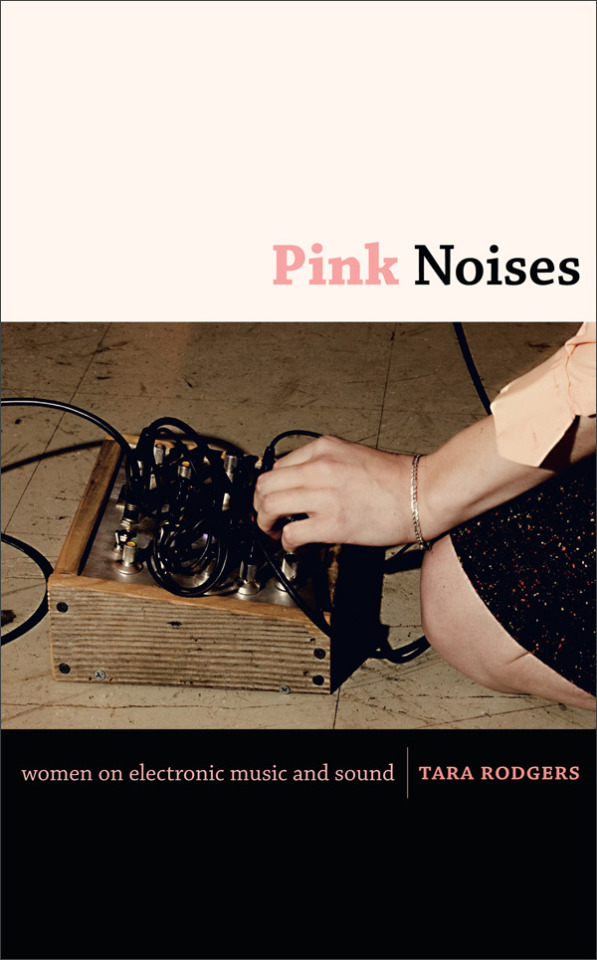
Pink Noises: Women on Electronic Music and Sound by Tara Rodgers
Get it from my Google Drive HERE
Pink Noises brings together twenty-four interviews with women in electronic music and sound cultures, including club and radio DJs, remixers, composers, improvisers, instrument builders, and installation and performance artists. The collection is an extension of Pinknoises.com, the critically-acclaimed website founded by musician and scholar Tara Rodgers in 2000 to promote women in electronic music and make information about music production more accessible to women and girls. That site featured interviews that Rodgers conducted with women artists, exploring their personal histories, their creative methods, and the roles of gender in their work. This book offers new and lengthier interviews, a critical introduction, and resources for further research and technological engagement.
Contemporary electronic music practices are illuminated through the stories of women artists of different generations and cultural backgrounds. They include the creators of ambient soundscapes, “performance novels,” sound sculptures, and custom software, as well as the developer of the Deep Listening philosophy and the founders of the Liquid Sound Lounge radio show and the monthly Basement Bhangra parties in New York. These and many other artists open up about topics such as their conflicted relationships to formal music training and mainstream media representations of women in electronic music. They discuss using sound to work creatively with structures of time and space, and voice and language; challenge distinctions of nature and culture; question norms of technological practice; and balance their needs for productive solitude with collaboration and community. Whether designing and building modular synthesizers with analog circuits or performing with a wearable apparatus that translates muscle movements into electronic sound, these artists expand notions of who and what counts in matters of invention, production, and noisemaking. Pink Noises is a powerful testimony to the presence and vitality of women in electronic music cultures, and to the relevance of sound to feminist concerns.
Interviewees: Maria Chavez, Beth Coleman (M. Singe), Antye Greie (AGF), Jeannie Hopper, Bevin Kelley (Blevin Blectum), Christina Kubisch, Le Tigre, Annea Lockwood, Giulia Loli (DJ Mutamassik), Rekha Malhotra (DJ Rekha), Riz Maslen (Neotropic), Kaffe Matthews, Susan Morabito, Ikue Mori, Pauline Oliveros, Pamela Z, Chantal Passamonte (Mira Calix), Maggi Payne, Eliane Radigue, Jessica Rylan, Carla Scaletti, Laetitia Sonami, Bev Stanton (Arthur Loves Plastic), Keiko Uenishi (o.blaat)
#book#tara rodgers#annea lockwood#pamela z#le tigre#ikue mori#Pauline Oliveros#Pink Noises: Women on Electronic Music and Sound
540 notes
·
View notes
Text
Music stream for Gaza !
All donations raised from this compilation will be sent to Medical Aids for Palestine (MAP), an organization prioritizing the health of Palestinians living under occupation and as refugees. They provide immediate medical aid to those in need and work to develop local capacity and skills for the long-term development of the Palestinian healthcare system.
6 notes
·
View notes
Text
all the rules are there to be broken 💁 melody and rhythm? 👀 are they really necessary 🧐
9 notes
·
View notes
Photo
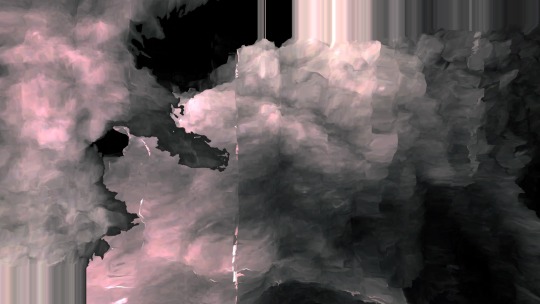
🔴 ON AIR - Today Tuesday 6 June 2023 at 7:00 pm (CEST) - usmaradio.org USMA for Radioart106 #𝟭𝟱𝟳_𝗥𝗘𝗖𝗢𝗡 𝘄𝗶𝘁𝗵 𝗔𝗚𝗙 [58 min]
methodologies of sounding. REC:on ⇢ a space {inflection} for political sound work & political listening ↣ derived from a compositional technology of ⥉ growing sound ⤹ growing connections ‡ ⁜ ⁂ ⁁ ※ growing networks ✸ #soundasgrowing - the piece explores, the listening space rec-on.org, sound and listening, critic and reflects sound practice. Listen to the current world and identify space for artistic positioning. What is political sound? What is collective sound? Does sound have a transformative quality? What is a sonic position?
Antye Greie-Ripatti AGF is an audio sculptress, composer and sound artist. Curator, facilitator of sound art, poemproducer & intersectional feminist networker. Her work emphasises language, sound, listening, voice and politics and can be summarised as Feminist Sonic Technologies expressed in mixed media, audiovisual live performances, digital communication, sound installations, commissions for radio, movies, theatres and online. In 2020 she founded RECon (rec-on.org) – a sound & listening exhibition space for political sound and the sound-activist community around it.
>> Radioart106 explores radiophonic works of worldwide radio artists. Radio art is a subset of Sound art where radio art is produced for the medium of radio and is specifically intended for broadcast. A new radio work is aired every first (or second) Tuesday of the month at 7:00 pm CET on usmaradio.org
0 notes
Photo

In this podcast, we talk to Antye Greie about language, sound, and the body. At their intersection, the voice emerges, with its multiple resonances and different ways of introducing the voice of others through her own practice and space of visibility. Along the way, we look at her work and methodology, from the deconstruction of texts to the implementation of what she calls “feminist sonic technologies”. Permeating everything, we encounter the memory and the experience of having been raised in the values and the political experiment of the former Eastern Bloc and feeling part of a silenced diaspora.
https://rwm.macba.cat/en/sonia/sonia-366-antye-greie-agf
Music: AGF. Recorded: February 2022.
1 note
·
View note
Photo

Antye Greie-Ripatti (AGF), Germany
http://antyegreie.com
#agf#antye greie#antye greie-ripatti#music#musique#electro#electronic music#musique électronique#voice#voix#πwcm7
1 note
·
View note
Text
(SPAM Cuts) KICKING THE KAOS PAD - ENTERING INTO THE TECHNO-CHEMICAL DISORDER OF AGF-POEMPRODUCER

This week’s SPAM Cut features Max Parnell, looking at the transhumanist intimacies and techno aesthetics of self-proclaimed bass poetess, AFG Poemproducer’s new printed printed collection, Poemproducer, available now via paranoia publishing.
writing in the electronic age. if emotions have cycles. some salmiakki pattern. i am gathering thoughts from every corner of this electronic planet.
> Antye Greie, stage name AFG Poemproducer, is an e-poetess, writer, curator, musician and performance artist known for her deconstruction of language through digital technology. Off the page, she converts her poetry into electronic music, digital media and sound installations in auditoriums, museums and theatres.
> Her first printed collection Poemproducer, published by paranoia publishing group ltd., includes 30 of her poems selected from her poem-newsletter, each one being randomly translated into one of five languages.
> Throughout these poems, there's a sort of anxiousness that permeates the chopped up, fragmented sentence structure, mirroring the glitchy, jolting style of AGF's music that wavers between rhythmic and arrhythmic. As readers, we're frequently fed assertions that dart at us as if from paranoid eyes;
terrorists can attack / security tends to be reactive terrorism is gang war / personal war / trapped
> It seems almost necessary to read these poems at a fast tempo, whereby we experience these warning words like flashes of a strobe light. Yet this anxious tone isn't consistently one of paranoia. On the contrary, the texts can be anxiously playful in their examination of what writing actually consists of:
I am enjoying the dance / authorship is not a feeling / it is work / revealing patterns / rhythms of people / the visible and audible / text is live / collected in / real time rooms / the ebb and flow of soundscapes
These examinatory passages crop up throughout the collection, often in the form of existential questions planted amongst the technological stream-of-consciousness flow. There's a sense of falling with each poem, of careering down the page, stumbling on every short burst of words that run into the next assertion. The narrative voice, often wavering between machine-like and personal, frequently addresses the reader, questioning 'what are we doing? / do we mean what we are / and are what we mean?' These unanswered questions work to help us make sense of the chaotic, obfuscating language breakdowns that characterise this collection.
> Perhaps the opening of 18, 'Subject: no harm can fall', most neatly encapsulates what it is like to read this collection:
you are now / entering the body of words / electrical dadada strict codes cracked by / bending borders --->
It is here we enter this 'fragile state', one in which the borders between human and machine start to cross over, echoing the transhumanist rhetoric of 'human but perfected', articulated in the prosthetic metaphor of 'the body: a space-helicopter'. Poem 22 illustrates this flirtation with the cyborg, asking us 'isn't breathing techno? / are we just recreating heartbeat? / looking for extended battery life?' As transhumanists look to loosen the borders between homo sapiens and technology, Poemproducer's overtly technological style bends the boundaries between automated speech and narrative voice. Throughout the collection, there's a sense of being intimately addressed, of being present in the poems with the author. Yet the playfulness comes in the subtle AI shades that permeate the speaker's tone, presenting AGF's notion of language as coding, as seen in 'Subject:mmmmmmmm', a poem consisting of single letters, symbols and numbers.
> Nowhere does this merging of voice stand out more than in the small personal-yet-not-personal closing remarks that end almost every poem in the collection. These vary from the formal, 'with respect / yours AGF', to the warming 'with love from the woods / yours poetess' and even personal 'my dearest, i wish you an upmost powerful 2010!' The tone of the closing remarks fluctuates between impersonal computer automation and intimate speaker-listener interaction, perhaps an accurate way to describe the collection as a whole.
~
Text: Max Parnell
#Max Parnell#SPAM Cuts#Poemproducer#technology#poetry#technopoems#AGF#transhumanism#posthumanism#intimacy#cyborg#automation#Antye Greie
1 note
·
View note
Video
youtube
"Numb" - Jenna Valenzuela, Club Dance Studio, teen contemporary solo, 4th overall, Jump Portland OR, March 2017 ★ Choreography by Chelsea Jennings ♪ PRIVATEbirds ~ Antye Greie ♪ Greim93 ~ Antye Greie
17 notes
·
View notes
Photo

cet été deux personnes très différentes m’ont dit de publier mes journaux et cette troisième personne ci-dessus (la musicienne antye greie) me conforte dans mon envie
3 notes
·
View notes
Photo
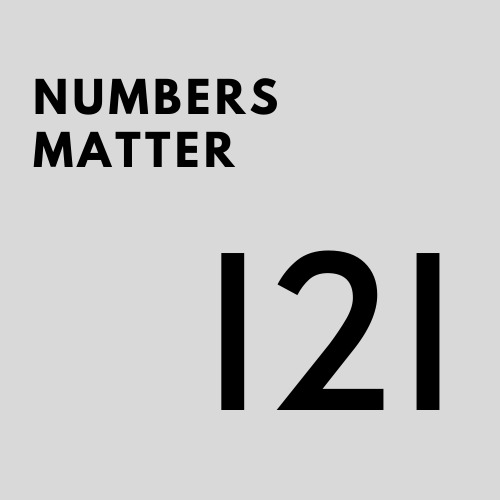
NUMBERS MATTER 121
チハルMK 、 おたこ、 川畑優、 AGF、 日野繭子、 大西蘭子
Thursday 22 October – 9pm (UK time) | Free
IKLECTIK YouTube Channel: https://youtu.be/HXFmH46kVEQ
Why numbers matter: Japan, a country with a population of over 124.2 million, is ranked at 121 in the Gender Inequality Index (GII) published by Human Development Reports 2020. Japanese women got the vote in 1946 – earlier than China (1949), Liechtenstein (1984) and Switzerland (1993).
In the ranking chart of the Global Gender Gap 2020, the top ten reads as follows: 1: Iceland; 2: Norway; 3: Finland; 4: Sweden; 5: Nicaragua; 6: New Zealand; 7: Ireland; 8: Spain; 9: Rwanda; 10: Germany. The UK ranked 21, following Albania at number 20. Though Japan falls some 100 places behind the UK, the latter’s ranking at 21 is nothing to be proud of either. Clearly there is plenty of work to be done in both countries. Hence, NUMBERS MATTER 121 features four special projects led by Japanese women: Chiharu MK, Otaco, Yu Kawabata (in collaboration with German poemproducer AGF) and Mayuko Hino.
Footnote: In the Press Freedom Index published in 2020, Japan and the UK don’t fare much better than in the GII. Out of 180 countries listed, the UK is ranked at 33 and Japan at 66. The countries listed from one to ten are as follows: Norway, Finland, Denmark, the Netherlands, Jamaica, Costa Rica, Switzerland, New Zealand, Portugal and Germany.
Programme:
“Paramnesia 2020” by CHIHARU MK “Tomodachi” by OTACO “Hamaderea Park ” by YU KAWABATA (sound) + AGF (visuals) “Toyosu 2020″ by MAYUKO HINO

Chiharu MK is from Sapporo. Primarily trained as a composer, she studied the acousmonium, that is, the sound diffusion system, at INA-GRM studio in Paris. Since completing her studies in 2002, she has become an internationally recognised electroacoustic sound artist, either performing or creating sound installations for festival, gallery or non-concert hall spaces in Europe, Hong Kong and Japan. For Intersect 2015, she commissioned the non-Japanese artists Francisco López, Sogar and Taylor Deupree to compose sounds for a 17.1 multi Channel Speaker System (consisting of seven speakers + ten screen speakers + one woofer) in Sapporo city centre’s underground walkway. Chiharu MK has also released three solo CDs: https://www.studio-cplus.net/
Chiharu MK’s new multimedia work Paramnesia 2020 is based on her original piece for Hong Kong Art Centre’s 40th anniversary multi-channel Sound Forms festival in 2018.
This film shows her performing the piece inside Glass Pyramid, nicknamed Hidamari – Japanese for Sunny Spot, it’s the centrepiece of Sapporo’s Moerenuma Park, designed by Japanese American sculptor Isamu Noguchi (1904–1988). Construction work on the park actually began in the year Noguchi died, and it opened in 2005. The film also shows Chiharu MK recording on Ishikari beach, just north of Sapporo.
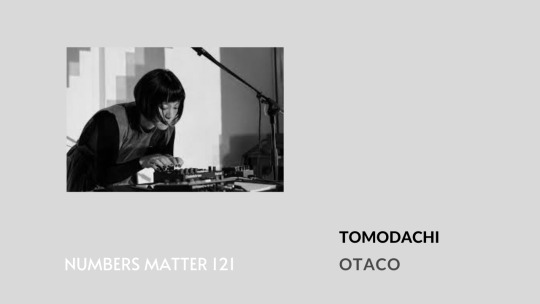
Taking her name from tako, the Japanese word for octopus, Otaco is originally from Japan’s northernmost main island Hokkaido. An electronic musician and vocalist, Otaco is one of the most vibrant and engaging performers to emerge from the alternative music scene anywhere in Japan.
Now living in Tokyo, she operates a home studio set-up of a rhythm box with a synthesizer; she samples and syncs sounds into a computer, running them into real-time sequences to construct her outre pop-electronica songs and instrumentals. Her music can be heard at https://otacosan.bandcamp.com/music. Otaco also plays guitar when she leads Gotou, an occasional rock trio formed out of homage to early 1980s West Berlin groups Mania D and Malaria!. She appeared for the first time in the UK during Coding In GE 2018 festival for women and technology.

Antye Greie also know as AGF was born and raised in East Germany. She is a vocalist, digital songwriter, producer, performer, e-poet, calligrapher, digital media artist. In the last decade Greie has released more than 20 full length records and played over 300 live performances worldwide. AGF runs her own production company AGF Production – http://antyegreie.com She first worked with Yu Kawabata on her 2015 album A Deep Mysterious Tone, the third in AGF’s series of settings and poetry interpretations from different countries, this one featuring Japanese poets and writers including Noe Ito, Fumiko Kaneko, Shikubu Izumi, Blue Stocking editor and writer Hiratsuka Raicho, and more.
Yu Kawabata is a techno DJ active in Japan and Russia. This is Yu and AGF’s second collaboration. On their first, AGF set to music Yu’s reading of a waka poem, written by the 12th century court lady Yūshi Naishinnō-ke no Kii, enumerated as one of the Thirty-Six Female Immortals of Poetry. On their latest, Yu has created new music for a film by AGF. https://soundcloud.com/yukawabata
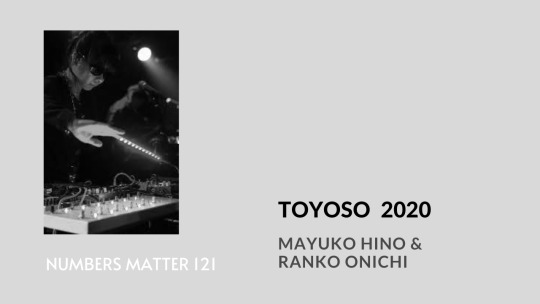
Since resuming music in 2011 after a ten year break to study Chinese medicine, Mayuko Hino has reclaimed her status as queen of noise.
A prolific live performer, Hino is best known for C.C.C.C. (Cosmic Coincidence Control Center), the group she formed in 1990 with Hiroshi Hasegawa, Fumio Kosakai and Ryuichi Nagakubo. In their early phase, the band grabbed attention by combining noise music with Hino’s sadomasochism performances using bondage ropes and dripping candle wax. Hino has since been a member of Mne-Mic, DFH-M3 and her most recent group Transparentz with Akira Sakata, who split up in January 2020.
Whether solo or in her various group projects, Hino experiments with the function of noise music as a transdisciplinary medium, in the process to breaking the boundaries surrounding performance art: urban structure against man, art against non art, activity versus rest.
In 2018 Mayuko Hino performed at Iklectic’s Coding In GE Festival alongside and in collaboration with Ramleh. The same year she released her second solo album Lunisolar. In addition to self-made instruments, Hino plays noise with her six-theremin oscillators (in bright pink), a unique device specially made for her by Ryo Araishi (aka ichion)
This year Hino had planned to resume activities with C.C.C.C. to mark the US reissue of their first four albums, but unfortunately their plans had to be put on hold because of the pandemic.
“There’s a sense of momentum to be found in Hino’s noise; it’s rarely static… At the hands of Hino it seems astral travelling is as much out-of-this-world as it is an out-of-body experience… on Lunisolar she continues with the ever evolving atmospheric and psychedelic sound that energised the noise of C.C.C.C.” (Compulsion Online)
“Hino Mayuko makes no bones about her wide-ranging noisician flexibility here, nor her honored place in the contemporary Japanoise scene… Unlike a bevy of artists who just make ear-splitting sonic somersaults, Hino’s sound is more impressionistic and staggered in its delivery, incorporating a yin/yang of the industrial and environmental.” (Tone-Shift)
RANKO ONISHI (Mne-mic): voice
Performing artist Ranko Onishi was born in Hokkaido. She moved to Tokyo where she joined Shuji Terayama’s Tenjo Sajiki theatre company in 1980. She was a second year student of dancer Min Tanaka in 1982 and became a full member of Tanaka’s company in 1984. Five years later in 1989 she performed with Keiji Haino. She and Hino work together in the duo Mne-mic, featuring Hino on electronics, Theremin and synthesizer, and Onishi on voice, water and fogphone. Their album Gulf Stream was released by Alchemy Records in 1999.
Curator Keiko Yoshida’s notes for NUMBERS MATTER 121
While researching texts for AGF’s 2015 CD A Deep Mysterious Tone I developed a profound interest in women’s history in Japan. AGF and I first met and begain talking about her project while she was taking part in my hometown Sapporo’s International Arts Festival in 2014. For the album she compiled and set to music Japanese writings and poems from the ninth century to the present day, and commissioned the female electronic musicians Ryoko Akama (UK), Kyoka (Germany), Tujiko Noriko (France) and Yu Kawabata to read her selections. She had met them at European festivals, and as she got to know them she learnt these female electronic musicians are not treated very well when they’re back home in Japan.
Indeed NUMBERS MATTER 121 took seed in these discussions on women and Japan with AGF. In some ways it’s also a sequel to “Coding in GE”, the 2018 Iklectik festival offering a platform to female electronic musicians, for which we got funding from Sasakawa Foundation UK, and in which Otaco, Mayuko Hino and AGF participated.
Another question addressed in NUMBERS MATTER 121 is the subject of decentralisation. I consciously asked musicians from outside Tokyo to participate in this project.
Currently working on a photo story book about 1980s London and Berlin.
Please support the project buying an e-ticket (#nameyourprice). ** https://buytickets.at/iklectik/439711 **
2 notes
·
View notes
Text
Poemproducer
comissioned artist bio for AGF
German artist AGF aka Antye Greie-Ripatti is a sonic warrior and electronic music producer. Her music inhabits an augmented space where pounding experimental techno, spoken word, abstract video art, feminism and radical ecology create a self-sustaining environment. Originally from East Berlin, she started to develop a DIY approach early on, while also using her voice to fight against oppression by supporting marginalized communities and calling out injustice, most recently through female:pressure, a support community and promotional platform for female-identified electronic musicians. Currently based in Northern Finland, Antye founded the local arts organization Hai Art in Hailuoto. Since its inception in 2011, Hai Art has been involved in numerous sound-related projects, focusing on media arts with children. Antye acts as its director, curator and a workshop instructor. Active since the early 90's, she has collaborated with strong names in electronic music such as French pioneer Eliane Radigue, German legends Gudrun Gut and Ellen Allien, British avantgardist Kaffe Matthews, Finnish IDM treasure Vladislav Delay and classical composer Craig Armstrong. Antye Greie-Ripatti, better known as AGF, uses electronic music as her medium to express her love for poetry, nature, new media art and strong female figures. A self-described poem producer, she courageously walks the thin line between music, contemporary art and activism. Antye (or Agee, as friends call her) grew up in East Germany and witnessed firsthand the fall of the Wall and the rise of techno culture. As a teen, she directly experienced the crumbling of dictatorship and took Philosophy courses at Bauhaus Dessau, which lead to her questioning her Marxist upbringing. In the German macho white hetero techno scene of the early 90's, men were banishing vocals from the club, insisting on not expressing emotion. Antye, on the other hand, rebelled against the trend by incorporating spoken word and poetry within her rough, techno sound. Her curious nature and mercurial spirit allowed her music to expand beyond the confines of traditional beat making, into the realm of sound art, poetry, video, performance and activism. Twenty years, some awards and collaborations later, she is still fighting to get women the visibility they deserve, whether with online platform female:pressure or by collaborating with risk-taking artists such as Afghan refugee Kubra Khademi. Active for over 15 years, female:pressureis for electronic music what Guerilla Girls was for contemporary art. Their charts breaking down the glaring inequality of male and female artists in music festivals have reached internet art status. Antye lives on an island in Northern Finland, records sounds in the woods, posts poems via twitter and through a poem newsletter one can subscribe on her website. In 2011 she founded the arts organization Hai Art in Hailuoto, where she activates as director, executive producer , workshop leader and independent sound curator. Over the years, Hai Art has organized numerous conferences and art residencies, mainly focusing on programs dedicated to children. They developed projects such as the iPad Orchestra Hailuoto, built an acoustic sculpture The Hailuoto Organum in public space, facilitated a children MediaLAB and numerous sound art camps. Her work is constantly expanding into new territories, most recently incorporating radical mycology, performance art and radio work.
0 notes
Text
Some Final Thoughts on the Block 4 2017 #FemGeniusesinBerlin
"Some Final Thoughts on the Block 4 2017 #FemGeniusesinBerlin" by Kai Mesman-Hallman
This podcast—led and produced by Kai Mesman-Hallman—provides some final reflections on the Block 4 2017 section of Hidden Spaces, Hidden Narratives: Intersectionality Studies in Berlin with Professor Heidi R. Lewis. Throughout the block, the #FemGeniusesinBerlin have taken walking tours, visited museums and cultural centers, and met with activists and artists in the city to conduct situated…
View On WordPress
#ADEFRA#Agatha Christie#Akinbode Akinbiyi#Anaïs Héraud-Louisadat#Anabel Simotas#Andrew Ceglinski#Anna Balaguer#Antye Greie#Asian Diaspora Berlin#Asian Diaspora Germany#Atiya Harvey#Aykan Safoğlu#Berliner Forum für Geschichte und Gegenwart#Berliner Unterwelten#BlackBox Cold War#Bridget O&039;Neill#Britta Lam#Caroline Olin#Carolyn Gammon#D. Adams#Das Verbogene Museen#Das Verbogene Museum#Drew Ceglinski#Dylan Compton#Elsa Godtfredsen#Emily Ruete#FemGeniuses in Berlin#Gablinger Tours#Galerie im Körnerpark#Gallery in the Körnerpark
0 notes
Photo
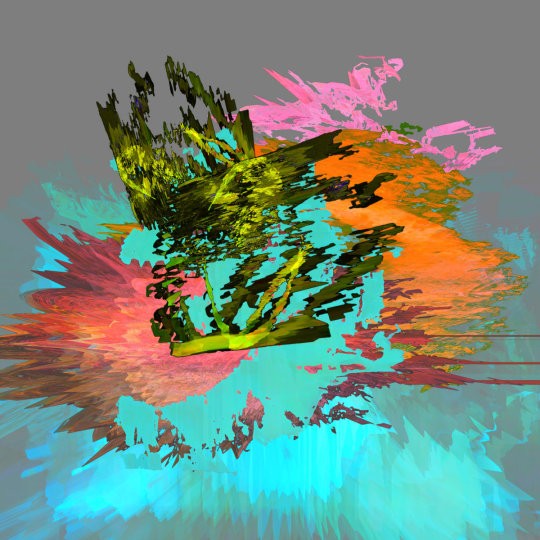
uttu EP by AGF
AGF - uttu EP
Huge, powerful, goddess-summoning anti-beats from Finnish sound artist Antye Greie-Ripatti. Fierce, abstract sound design otherworlds you’ve got to hear. -Kris
1 note
·
View note
Quote
a strange, sensitive interaction between electroacoustic methodology and stylistic references to bass music and breaks. The energy of this experimental hybridity captures contemporary trends and issues in areas such as sociopolitics, geopolitics, agency and ontology; AGF subjects quite a range of topics to aesthetic and metaphorical exploration.
https://irregularcrates.com/2017/11/19/agf-solidicity/
2 notes
·
View notes